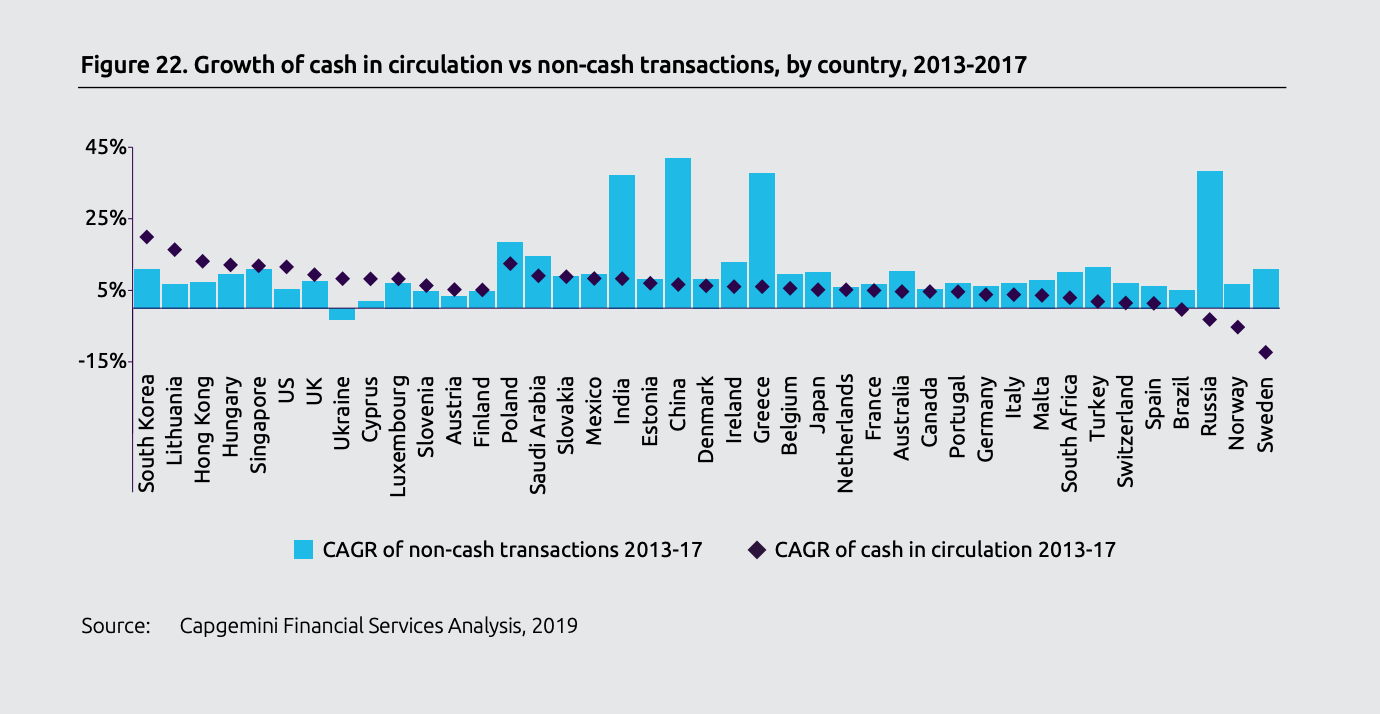
World Payments Report 2019
By rights it should be called “World Non-Cash-Payments Report 2019” as its sole focus by now is tracking and analyzing non-cash transactions, corresponding regulatory and industry initiatives, and digital transformation across the global payments markets. One of this year’s main topics is “Open Banking”.
In the WPR 2008 for example, cash was still mentioned in the summary of key findings. At that time, it was still issued in cooperation with the Royal Bank of Scotland and the EFMA (European Financial Management & Marketing Association), which may have accounted for the more balanced presentation of results.
Over 30% of countries record higher CIC rates
The complete denial of cash as an important form of payment is all the more astounding as even the WPR 2019 has to acknowledge, late into the report, that “over 30% of the countries analyzed in WPR 2019 recorded higher Cash-In-Circulation (CIC) growth when compared to that of non-cash transactions volumes” (p. 31).
Interestingly, countries with the highest non-cash transactions volume also continue to be highly dependent on cash.
On page 37, the report states that “cash has been resilient to the growing array of alternatives” and that “globally, CIC has increased from 4% to 7% annually over the last 5 years despite lawmakers’ support of non-cash transactions.” It continues: “Cash in circulation has been consistently growing across countries” and cites a study by the Federal Reserve Bank of San Francisco which concluded that “the growth of cash circulation had outpaced economic growth over the last decade in 40 of 42 major economies in Europe, Asia, North America, and Latin America.”
The report mentions countries like Finland, South Korea, Singapore and the UK with “record-high volumes of non-cash transactions” still supporting “medium to high cash usage.”
Even though the report notes an increasing focus by regulators on data protection and privacy regulation, the authors seem a little baffled by all these facts and figures in favor of cash. And remain undeterred in their promotion of non-cash payments.
Non-cash payments to reach one trillion transactions by 2022
The report’s key findings are that growth of non-cash payments is set to skyrocket with, globally, non-cash payments reaching the number of more than $1 trillion transactions by 2022. And that market incumbents are wary of Open Banking, because of the new GDPR in Europe and the Facebook Libra backlash, plus a multitude of non-cash payment network failures.
Excerpt from World Payments Report 2019
"Developing markets are leading the growth in the non-cash payment sector, projected to rise by a compound annual growth rate (CAGR) of 23.5% between 2017 and 2022. Emerging markets will soon dictate and shape the global payments landscape in terms of innovation, transaction capacity handling, and industry trends.
- In 2017, these markets accounted for 35% of global growth, a share expected to rise to 50% in the coming years. Key contributors include Russia, where non-cash transactions grew by 40% in 2017, India (39%) and China (35%).
- By contrast, mature markets including APAC, Europe and North America saw a steadier growth rate of 7%. Globally, non-cash transaction volume rose by 12% in 2016-17 to 539 billion.
- Debit cards were the fastest-growing non-cash payment instrument, with transactions up by 17% in 2017, ahead of credit cards (11%) and credit transfers (10%)."





